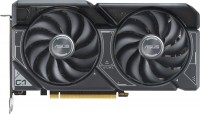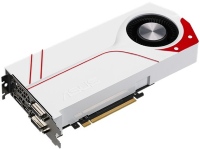Graphics Cards Asus series Phoenix (low-cost)
prices on 8 modelsAsus Phoenix Series
The Phoenix family includes entry- and mid-level graphics cards with a shortened printed circuit board and a single cooler. Other manufacturers have similar lines of compact video accelerators (for example, Gigabyte's ITX or MSI's Aero), but Asus has an important difference. Other manufacturers consider them exclusively in the role of so-called plugs, which are capable of little and serve only to display images on the monitor. In fact, it is an alternative to processors without discrete videography. Asus has no such restrictions.
 |
Thanks to this approach, the range of the Phoenix series impresses with a wealth of choice. For example, this is almost the only option to buy an ultra-low-cost GeForce GT 1030 model with a good cooling system. At the same time, in the ranks of Phoenix, you can find a rare variation of the GeForce RTX 3060 accelerator with a single cooler and a long board of only 177 mm. However, such a baby still occupies 2.5 slots and needs a 650W power supply. But her results are also impressive — almost 70 FPS in Cyberpunk 2077 on "ultra" and Full HD resolution. Even the recent leader of GeForce RTX 2080 could not do this.
However, the basis of the Phoenix series is the mid-level GTX 1650 and GTX 1660 cards, which underwent an operation to reduce the reference board, but did not lose in quality and speed. According to the manufacturer's idea, such a combination of price, performance, size and availability makes Phoenix cards the best option for installation in compact gaming computers and HTPC systems. In 2021, a graphics card of this level cheerfully pulls out most popular games in 1080p resolution and average graphics settings.







